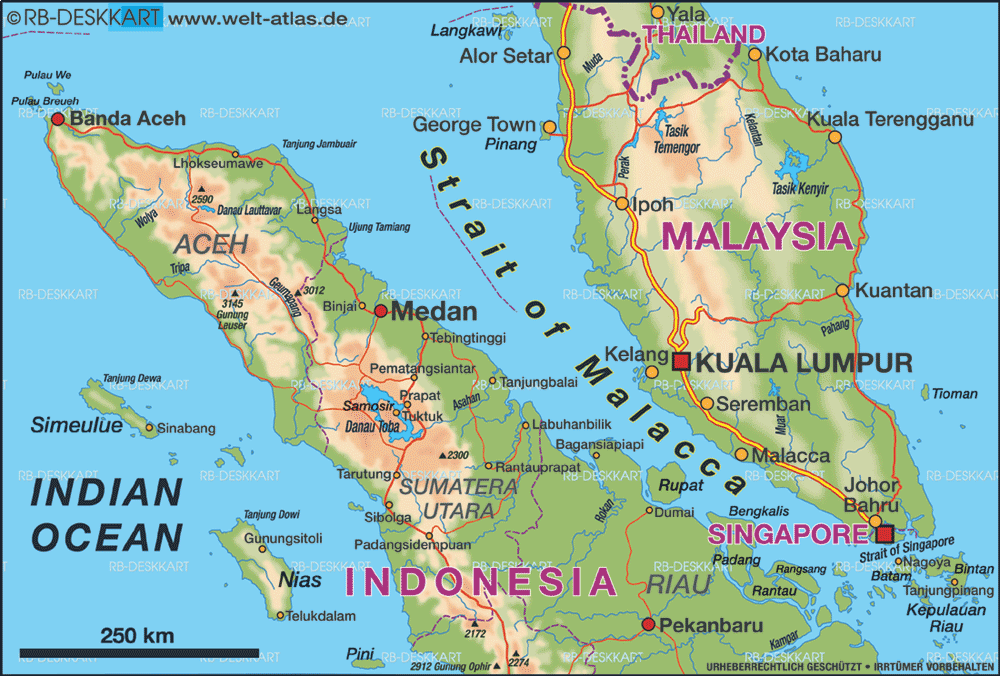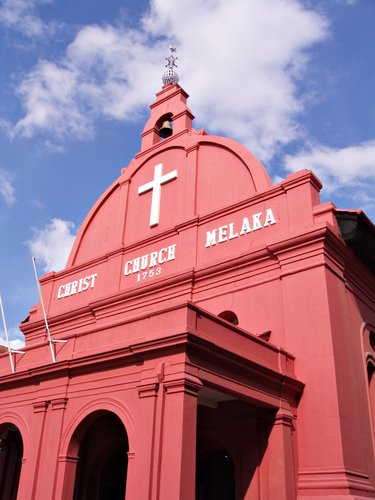Last December, I joined a tour group and spent 2 days in a small but beautiful town - Malacca, Malaysia. Before the trip, I did some study and found that the small town has a very long history, dated back in around 1400. I found a very interesting fact that Malacca has been occupied and governed by the Portuguese, the Dutch, the British, and the Japanese! It finally gained its Independence in 31 August, 1957. Therefore there are a mixture of cultures and buildings in the city.
Here are some physical geography facts (quoted from Wikipedia):
The state of Malacca covers an area of 1,664 km2 (642 sq mi). The state is divided into 3 districts: Central Malacca (Melaka Tengah) (314 km²), Alor Gajah (660 km²), and Jasin (676 km²). Malacca sits upon the southwestern coast of the Malay Peninsula opposite Sumatra, with the state of Negeri Sembilan to the north and Johor to the east. Malacca is also situated roughly two-thirds of the way down the west coast, 148 km south of Kuala Lumpur, the capital of Malaysia and 245 km north of Singapore and commands a central position on the Straits of Malacca. The state capital, Malacca Town, is strategically located between the two national capitals of Malaysia and Singapore, and connected with excellent roads and highways. Malacca still harbours no train station, though the terminal at Tampin, Negeri Sembilan is easily accessible. However, a domestic airport terminal rests in Batu Berendam.
Among the 788 thousand population in Malacca, about 57% are Malay, 23% of Chinese, and some Indians.
Malacca has been recognized as the World Heritage on July, 2008.
During my 2 day visit there, I had visited several museums, including the Baba Nyonya Heritage Museum and the Malacca Sultanate Palace Museum. I learned a lot of new things in these museums. It's amazed to see all the displayed items left behind by the previous colonials.
Because of its strategic location, the famous Chinese adventurer, Zheng He, also stopped by here 600 years ago. There are statues of him in the town. The Portuguese conquered the city in 1511 with 1200 people and 18 ships. It became a strategic base for Portuguese expansion in the East Indies. The Dutch defeated the Portuguese and ruled Malacca from 1641 to 1798. Malacca was ceded to the British in exchange for Bencoolen on Sumatra on 1824. You may find the reason why so many countries are fighting for Malacca from the map below. Whoever owns Malacca, takes a strong place in the control of Strait of Malacca and even the trade route from Asia to Europe.

Other than the museums, I have visited several places of interests, such as the famous Fort A Famosa, Christ Church, Jonker Street, etc. I also tried the well-known local food such as laksa, chicken rice ball, and Nyonya food.

I have also talked to some local shop owners, whose ancestors are Portuguese and Dutch. It was a great experience and more importantly, after the trip, I have a better understanding in the relationship between physical geography and human geography. Although human geography is largely based on human activities and cultures, we should never forget the physical geographical reasons behind the human behaviors.
没有评论:
发表评论